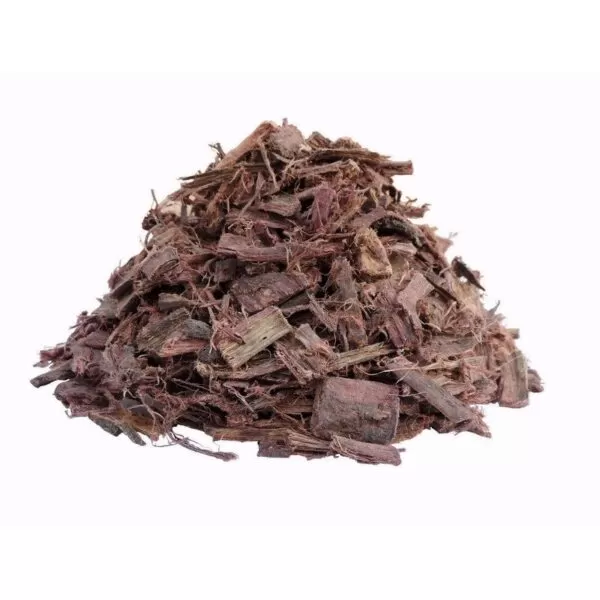
Few ethnobotanical materials are as intriguing as mhrb. Long tannins, vibrant natural colors, and a long cultural past in Northeastern Brazil and Mexico have made the bark useful in craft, cosmetics, and spiritual practice. The notes below provide practical, no-nonsense solutions to help you start your exploration.
What is Mimosa Hostilis Root Bark?
- Leguminous tree Mimosa tenuiflora (syn. M. hostilis) regenerates quickly after trimming.
- Tannins for leatherwork, saponins for soft soaps, and trace N,N-dimethyltryptamine (DMT) in the root part are in the inner bark.
- Color: Natural-fabric artists cherish powdered bark’s deep reddish-purple dye.
- When processed, dry chips crumble into a fine, fibrous powder and smell earthy.
Traditional and Modern Uses
- Indigenous wound care: Local healers apply bark poultices to minor cuts and burns.
- Textile dyeing: Soak 50 g bark per liter, boil 1 hour, drain, dip cotton or wool.
- DIY toners and soaps with tannin-rich elements tense pores.
- Visionary tea: Root bark and MAOI are permitted in some regions.

Safety and Legality
Country-specific laws:
- Bark is allowed in the US, but DMT extraction is not.
- Brazil and Mexico: Landowner consent required for collection; CITES-like requirements for commercial export.
- Germany permits possession, France bans sales.
- Milling dust irritates lungs, therefore wear goggles and a N95 mask.
- Test for allergies by patching a diluted extract on skin for 24 hours before cosmetic use.
How to Find High-Quality Bark:
- Sustainability reports—suppliers should choose cut roots over complete trees.
- The deep red interior and minimal gray mold indicate freshness.
- Lab analysis—heavy metal-free CoA.
Trusted formats:
- Coarse chips ship easier and last longer.
- Fine powder: Ready for dye baths but oxidizes quickly; desiccant packs.
Beginner Preparation for Dyeing Fabrics:
- Weigh cloth and use 5–10% bark weight-of-fiber.
- Simmer bark 60 min, filter.
- For deeper purples, add vinegar to pH 4.
- Submerge cloth 30 min, rinse cold, air-dry.
Topical ointments:
- Infuse 10 g powdered bark in 100 mL jojoba oil for 2 h at 50 °C.
- Strain and add 20% beeswax for salve.
To study botany:
- Store samples in amber jars at ≤25 °C.
- Log origin, date, and batch for traceability.
Quick Reference Box
Always checked local laws, wear safety gear, and purchase from ethical harvesters. A tiny test batch saves supplies, and identify everything to evade confusion.
Conclusion
Ecological awareness, local legislation, and small-batch experimentation are key to a good first interaction with mhrb. Be safe, take notes, and enjoy the brilliant colors and history of ethical use.





